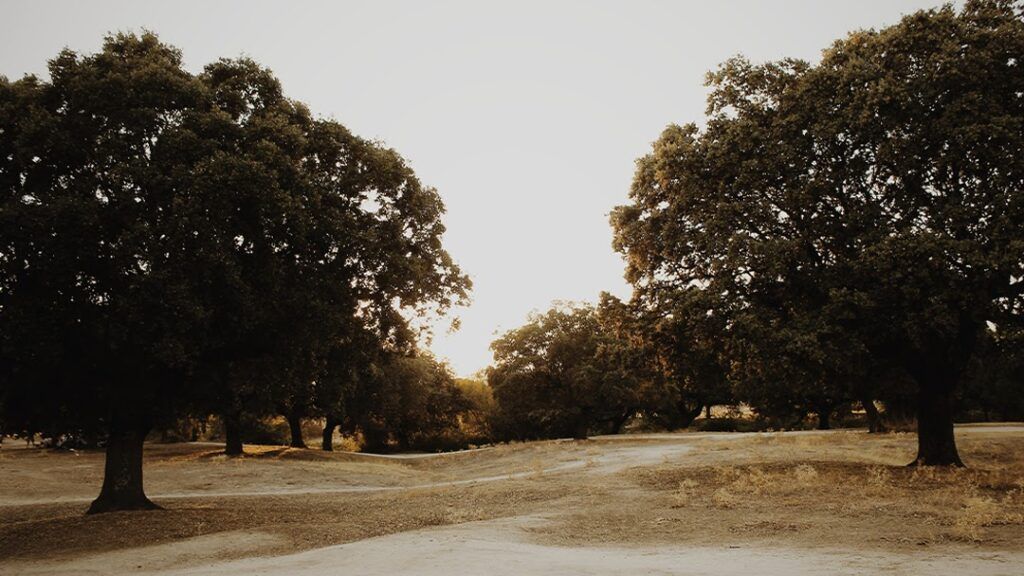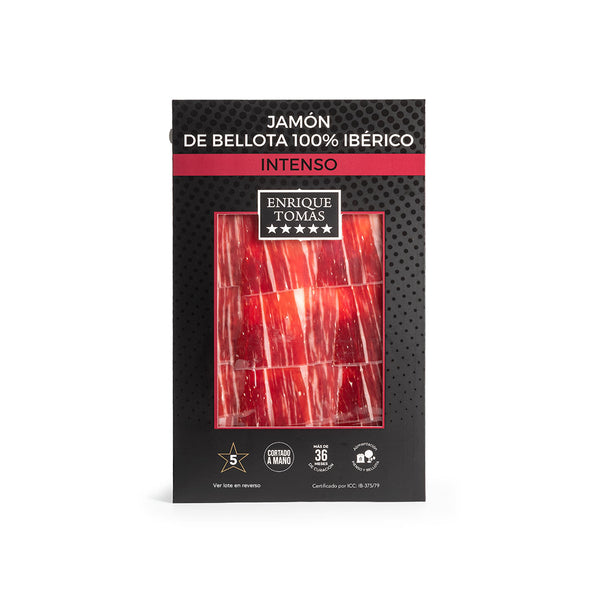
What is an Iberian pastureland? Find out here!
The term "dehesa" has its origin in the Latin word defesa, which means "fenced or enclosed land for grazing," but what is a dehesa?
At Enrique Tomás, we want to share with you all our knowledge about this concept that is directly related to the production of Acorn-fed Iberian Ham.
Are you ready? Get your pen and paper ready because we're starting!
What is a Dehesa and How is it Formed?
The dehesas are places where different animal species graze freely, and besides contributing significantly to the environment and biodiversity, they play an important role in the economy of the regions where they are located.
The dehesas are a natural paradise, vast extensions of Mediterranean forest in the southwestern part of the Iberian Peninsula, with wild and captivating beauty, where oaks, cork oaks, and above all, holm oaks, grow among vast expanses of fresh grass.
From these trees come the acorn, a fruit of great nutritional richness that is the main factor contributing to the quality of future Iberian ham. It's thanks to the acorn that the famous "acorn-fed ham" is produced.
In the dehesa, you can also find bushes, flowers, and forest fruits scattered around to aid in animal grazing, as well as streams and ponds where they can quench their thirst. This water comes from rainfall or snowmelt. It's in this sensational environment that the pigs will live freely for a few months.
 Iberian pigs in the Dehesa eating acorns
Iberian pigs in the Dehesa eating acorns

Iberian pig acorns
Where are Dehesas Located in Spain
According to data from the Ministry of Agriculture, the qualified area in Spain classified as dehesa ranges between 3.5 and 5 million hectares and is distributed as follows.
These are the dehesas in Spain:
- Extremadura: 1,237,000 hectares.
- Andalusia: 946,482 hectares.
- Castilla-La Mancha: 751,554 hectares.
- Castile and León: 467,759 hectares.
- Community of Madrid: 113,051 hectares.
According to the same Ministry, in our country, there are about 25,000 dehesa farms, and around 75% of them are privately owned, while the rest belong to communal properties, groups of neighbors, or municipalities.
Dehesas and Iberian Pigs
As mentioned earlier, dehesas play a crucial role in the production of acorn-fed Iberian ham, as it's where Iberian pigs undergo the montanera period, during which they feed on acorns and other natural products.
For pigs to be brought there, dehesas must meet specific conditions. For example, a hunting preserve must have at least 100 square meters per pig; if the space is smaller, it will be insufficient, and the Iberian pigs won't be able to roam freely and enjoy the magnificent fruit of the holm oaks.
In a good year, the pigs will find as many acorns as they want there, and thanks to this nut, along with wild herbs, roots, and anything they come across, they will eat wonderfully. This diet, combined with their ability to naturally infiltrate fat into muscle and the exercise they get during the montanera, is what makes their meat unique.
Just as the space in the dehesas is delimited, so is the number of Iberian pigs that can be raised in these areas. It's estimated that in Spain, at most, 700,000 pigs can be fattened each year. This means that only about 1.4 million acorn-fed Iberian hams and 1.4 million acorn-fed Iberian shoulder hams can be produced.
What is the Montanera Like in the Dehesas?
The montanera period must begin at a specific time of year, precisely in October, and it must last no more than until March. This is the time when the dehesa will be full of acorns.
During these four months, the pigs have to gain about 50% of their weight, which means each one of them has to reach around 170/180 kilograms.
Iberian pigs that don't reach this size after being in the dehesa must return to consuming feed, and the meat obtained from them can no longer be labeled as "acorn-fed Iberian" but rather classified as "field-raised Iberian."
The Stages of the Montanera
- From the moment the montanera begins in October and the pigs are released into the dehesa, the shepherd must control them to ensure they eat well and walk enough. They must also ensure that the less agile pigs also have access to food.
- At the beginning of the montanera, when the animals arrive in good shape and strong from the farm, they are taken to the higher and steeper parts, where they must do more exercise to eat and drink.
- As they fatten up, they are moved closer to the lower part of the dehesa, where the holm oaks are closer to the ponds, and the effort the animal has to make is reduced.
- For a period of 3 to 4 months, they will eat, in addition to abundant grass, everything they find, including, among other things, the bark of the cork oaks. And, of course, above all, the acorns that fall to the ground when they ripen. Mixed with fresh grass, the pigs will eagerly consume it, tempted by the natural oil it contains.
The Life of Iberian Pigs in the Dehesa
In the dehesa, acorns and grass are usually separated, sometimes at a considerable distance, and to move from one to the other, the animals must even cross streams and gullies. With so much exercise, the pig ends up very muscular.
Keep in mind that an oak tree produces about 25 kilograms of acorns per year, and in each hectare, which is a bit larger than a soccer field, there may be about 50 oak trees. It's estimated that for proper animal fattening, there shouldn't be more than 3 pigs per hectare.
To fatten up in the dehesa the 50 kilograms they're missing to reach 150, each pig will have eaten, among other things, 30 sacks of acorns like these, about 750 kilograms in total, and they will have traveled more than 1,000 kilometers across meadows, forests, and ponds.
So now you can understand why acorn-fed Iberian ham is so good. Thanks to the exercise and diet they get in the dehesa, we obtain top-quality hams.
 Iberian Pig
Iberian Pig
Enrique Tomás Acorn-fed Ham
At Enrique Tomás, we offer two types: acorn-fed Iberian ham and acorn-fed black-footed Iberian ham. Each has different nuances and flavors. Learn more about them in our online store.
If you're unsure which one to choose, don't hesitate to get in touch with our live chat at Enrique Tomás. Our master ham experts will be delighted to explain the differences to you so you can choose the one that's right for you.

The five types of Enrique Tomás hams








